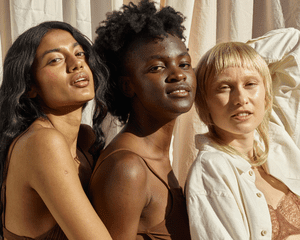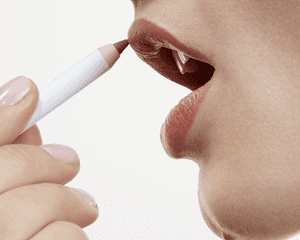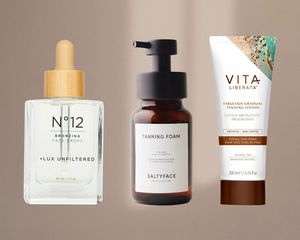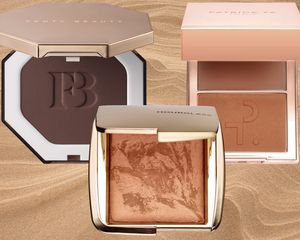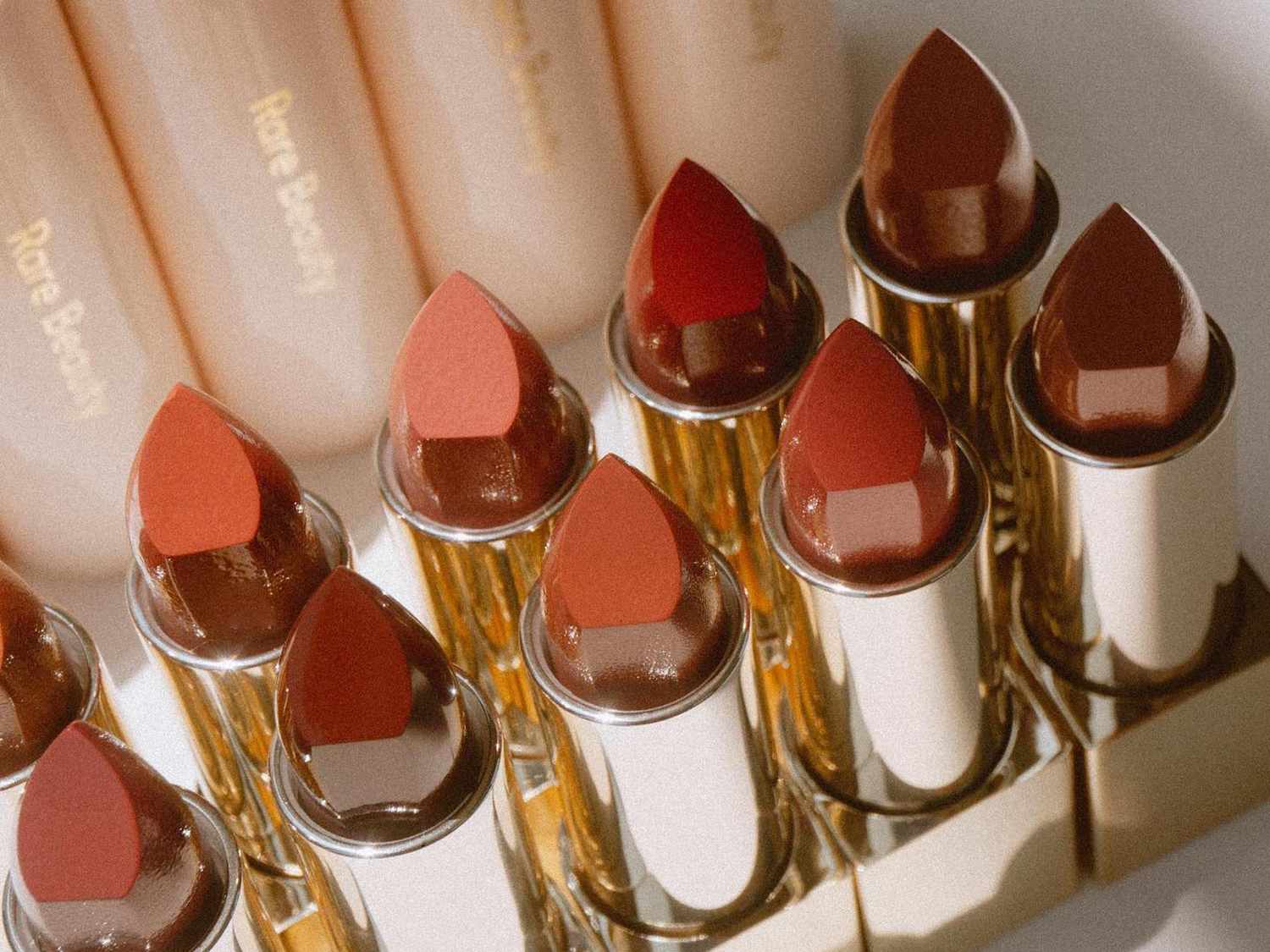
@rarebeauty / Instagram
Finding the perfect shade of lipstick sounds fun in theory, yet in many cases, it can be a stressful task that leaves us with analysis paralysis. You have countless shades to choose from, yet nailing down one that complements your skin tone, undertones, and personal aesthetic is quite a different story. "Lipstick color theory" has even been trending on TikTok recently, as creators with different skin tones have been recording themselves swiping on the same products with drastically different results. The good news is that understanding the science of color theory will help you to pick out the right shades and makeup combinations, and lipstick is no exception to this. Ahead, two pro makeup artists explain lipstick color theory and how to choose your best shade.
Meet the Expert
- Kira Stevens is a professional makeup artist and the founder and CEO of Kreativ Beauty, which offers commercial, editorial, and bridal services as well as lessons.
- Alexandra Loughton is the lead makeup artist and educator at Kreativ Beauty, based on Vancouver Island in Canada.
What Is Lipstick Color Theory?
The search for the right lipstick shade can seem endless, as it often looks very different in the package than against our skin and lips. Pro makeup artists Kira Stevens and Alexandra Loughton are familiar with lipstick color theory, as they work with over 200 brides per year who—you guessed it—want the perfect lipstick shade for their wedding day. "The fine balance of picking your right shade of lipstick has nothing to do with luck and everything to do with knowing your skin tone, undertones, and how they relate to color theory," Loughton explains.
If you need a refresher on color theory, you've come to the right place. "Lipstick color theory is similar to the color theory used in painting," Stevens says. "Mixing primary colors—red, yellow, and blue—in different combinations will create every color you could imagine. The colors in our skin work in the same way, too. We are all made up of different ratios of red, yellow, and blue (which we can refer to as our undertones), and brown and white (which can be referred to as our skin tones.) All of this, put together, creates our unique, individual complexion."
When choosing a lipstick shade, it's important to consider how the color coordinates with your skin tone, lip color, and how they relate to the color wheel. "To understand lipstick color theory, one must simply understand how well colors play together in the proverbial sandbox (or how they might not get along)," Stevens explains.
Why Lipsticks Look Different on Various Skin Tones
Have you ever tried a lipstick you loved on someone else, yet it looked completely different and not how you'd hoped on yourself? "Lipstick will look different on various skin tones because the 'base color' we are working with is changing," Loughton says. "Each person's skin tone will pull complementary and contrasting styles from the lipstick, as lipstick colors are made of their unique concoction from the color wheel. Depending on what it is, that lipstick dances differently on top of our personal skin tone."
In addition to undertones, how deep or fair your skin tone is can also have an effect on the way a lipstick color will look. "The same color lipstick can look wildly different on fair skin than on deep skin, even if the persons’ undertones are similar," Stevens says. "It can distinguish between 'I feel comfortable in this lipstick,' or 'This isn't it!'" Being aware of this is a good reminder not to get hung up on a specific lipstick that doesn't work well on you—instead, look for a similar shade that's a bit more tailored to your skin tone and undertones.
How Undertones Change the Appearance of Lipstick
Skin undertones fall under three main categories: warm, cool, and neutral. To quickly decipher your undertones, look at the veins in the back of your wrist. If they're blue, you have cool undertones, green veins indicate warm undertones, and a mix of blue and green indicate neutral undertones.
To understand how our undertones affect the way lipstick looks, Loughton brings it back to the color wheel. "All colors, including those in our skin, are made from the three primary colors, and we use that to choose the right lipstick," she says. "For example, if your skin has cool undertones (more blue tone), a cool mauve will look more harmonious than a warm, orange-based coral. This is because we are matching the lipstick undertone to the undertone of our skin, not fighting against it."
Would the same lipstick work on two people with different complexions if their undertones were the same? The truth is that it depends. "You can have two people with the same undertones (let's say golden, i.e., warm), but if one person has light skin tone and the other person has dark skin tone, the same lipstick can show up differently (or maybe not show up at all!) depending on its depth of color," Loughton says.
How to Pick the Right Lipstick for Your Skin Tone
Need some help finding the right color lipstick for your skin tone? We've got you. Loughton and Stevens share some of their favorite lipstick picks according to skin tone below:
- Deep skin: "Don’t be afraid to grab a bright color for a deep skin tone," Stevens says. "Because the lipstick will be over a darker tone, it will have more visible contrast and stand out. For a warm or neutral skin tone, try an orange-based red for a warm glow. For a cool tone, go with a dark berry." For an orange-based red lipstick, try the Nars Lipstick in Heat Wave, and for a dark berry, try Mac's Matte Lipstick in Diva.
- Medium skin: "A caramel nude or coral will be stunning if you have a medium skin tone with a warm undertone," Loughton says. "For a medium-neutral undertone, try to find a color that is more balanced in tone." She recommends Clinique's Pop Lip Color and Primer in Bare Pop.
- Fair skin: "If you are quite fair with a cool undertone, I always love a soft rose or a subtle mauve," Stevens says. One good option is the Danessa Myricks Colour Fix in Latte.
The Final Takeaway
Knowing your undertones and getting familiar with lipstick color theory can significantly improve the outcome when shopping for a lip product in your ideal shade. Put the above knowledge to the test the next time you need a new lip color—you'll surely be able to find some options that bring together your favorite hues with a result that complements your complexion.
